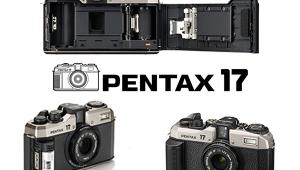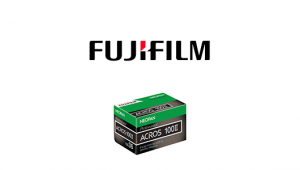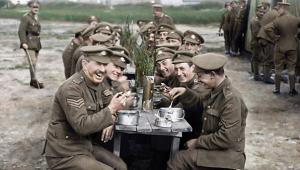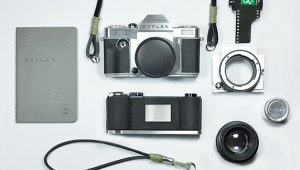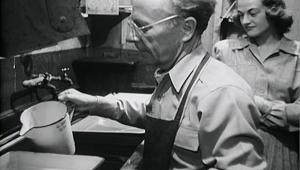Photography in it's old format gave some sense of true photography. Today in this digitized world everything seems created in a zap. The basic building blocks of photography were indeed cool. SAT Prep
A Look Back: Tools and Techniques

Early photographers were bedeviled by the slowness of their sensitized materials. Though exposure times were eventually shortened to workable lengths, early studios used neck braces and confining chairs to keep their subjects still while the exposure was being made.
Our perception of the people we view in nineteenth century photographs might be formed by their necessarily stiff and staring faces; this is often a false impression of a vibrant age caused by the medium's low sensitivity to light. Yet, in the portrait shown here we learn as much about the people depicted, and can read into their possible relationship and personalities, as we do about the tools and techniques used to make the image. I cannot feel but that there was more than a slow emulsion that determined the looks they send out through time, through the camera that made the image, and the materials on which the image was made.
As photography grew and changed, the sensitivity situation improved with the invention of the wet plate process in 1851. This immediately rendered the previous sensitized material obsolete. The emulsion was flowed onto a glass plate, which eliminated the textural interference and light dispersing character of the paper negative. Though Daguerreotypes were still used for portraiture, the material was slowly replaced by the glass negative and eventually faded into obscurity.
The gain in sensitivity represented by the glass plate was not without its problems. The plate was dubbed "wet" because it had to be coated with a light-sensitive emulsion right before exposure, then developed right after exposure. This tied the darkroom to the camera, which, though little problem in established studios, was certainly cumbersome in the field. Photographers had to travel with their own coating and developing systems, which meant pop-up tents, covered wagons and jars of sensitizer went with them.
Printing papers went through similar improvements. Albumen paper, which literally used egg whites as the medium in which light-sensitive salts were suspended, became so widely used that it has been written that “the chickens of Europe and America were put under great strain.”
These breakthroughs produced a wave of photographers who worked in scientific, exploration, portrait and even fine art photography. Portraitists such as Nadar are certainly worthy of study. Nadar, a lively character who was also an avid balloonist, portrayed the writers and artists of Paris in straightforward fashion, allowing their strength of character and body language to tell the tale.
Photographers who took the wet plate into the field encountered the problem of the oversensitivity of the orthochromatic emulsion to blue, but overcame it by making two exposures--one for the sky and one for the ground, then combining the two negatives when they made a print. The combination printing technique was used by fanciful artists such as Henry Peach Robinson, who collaged them together with scissors and dye. His highly produced pictures depicted maudlin scenes from Romantic novels or bucolic idylls from an imaginary countryside.
These studio-produced images raised a cry of foul that sounds very much like the objections made to computer-produced imagery today. How could one ever trust that ultimate recorder of reality--photography--if it was manipulated with such disregard for the truth, complained nineteenth century critics.
The period 1870-90 saw the birth of true modern photography, with the wet plate being replaced by the dry plate (which could be prepared beforehand, thus freed the photographer from being tied to the darkroom), and, later, by film being available on a flexible support rather than glass.
The speed with which these changes occurred, and with which one technology eclipsed and made obsolete another, is akin to what's happening today. But each stage moved photography in the direction of ease of use, accessibility and the ability to work faster. Camera design followed the technology, and hand cameras soon replaced the cumbersome devices with which photographers had previously labored.
To delve further into the artists and materials, simply Google names or processes you're curious about and you’ll find a rich archive that will aid in your research into the amazing history of our medium. Here’s a start. Just click on these references to learn more.
Wet Plate Process: click here Daguerreotypes: click here Albumen Prints: click here Nadar: click here Henry Peach Robinson: click here
- Log in or register to post comments

This is right that the expertise of the person taking snaps is very important but with this for a better print colour scheme and especially for hard copy ink are very important. inkjte printers

Our team of professional web designers offer the best website design service for $49/mo. The responsibility of our web design company is not to design a website only, but to design an online face for our customers that reflect their vision, mission, and strategy.

These studio-produced images raised a cry of foul that sounds very much like the objections made to computer-produced imagery today. How could one ever trust that ultimate recorder of reality--photography--if it was manipulated with such disregard for the truth, complained nineteenth century critics.
http://www.maleextrauserreviews.com
http://www.penometuserreviews.com
